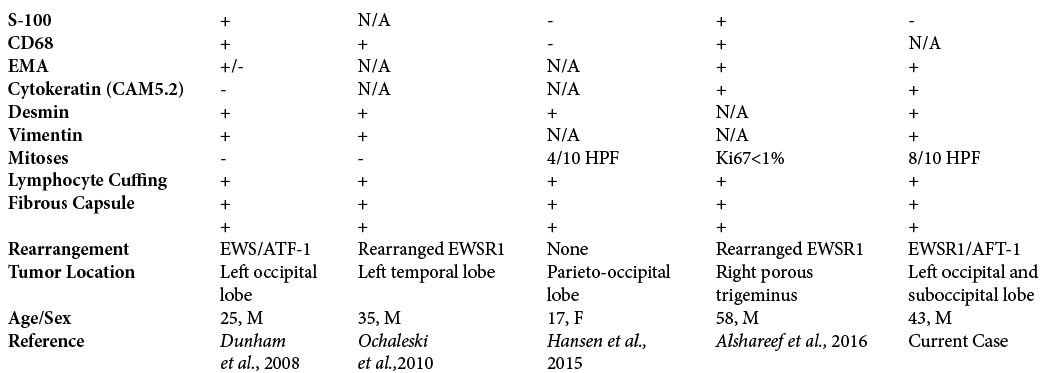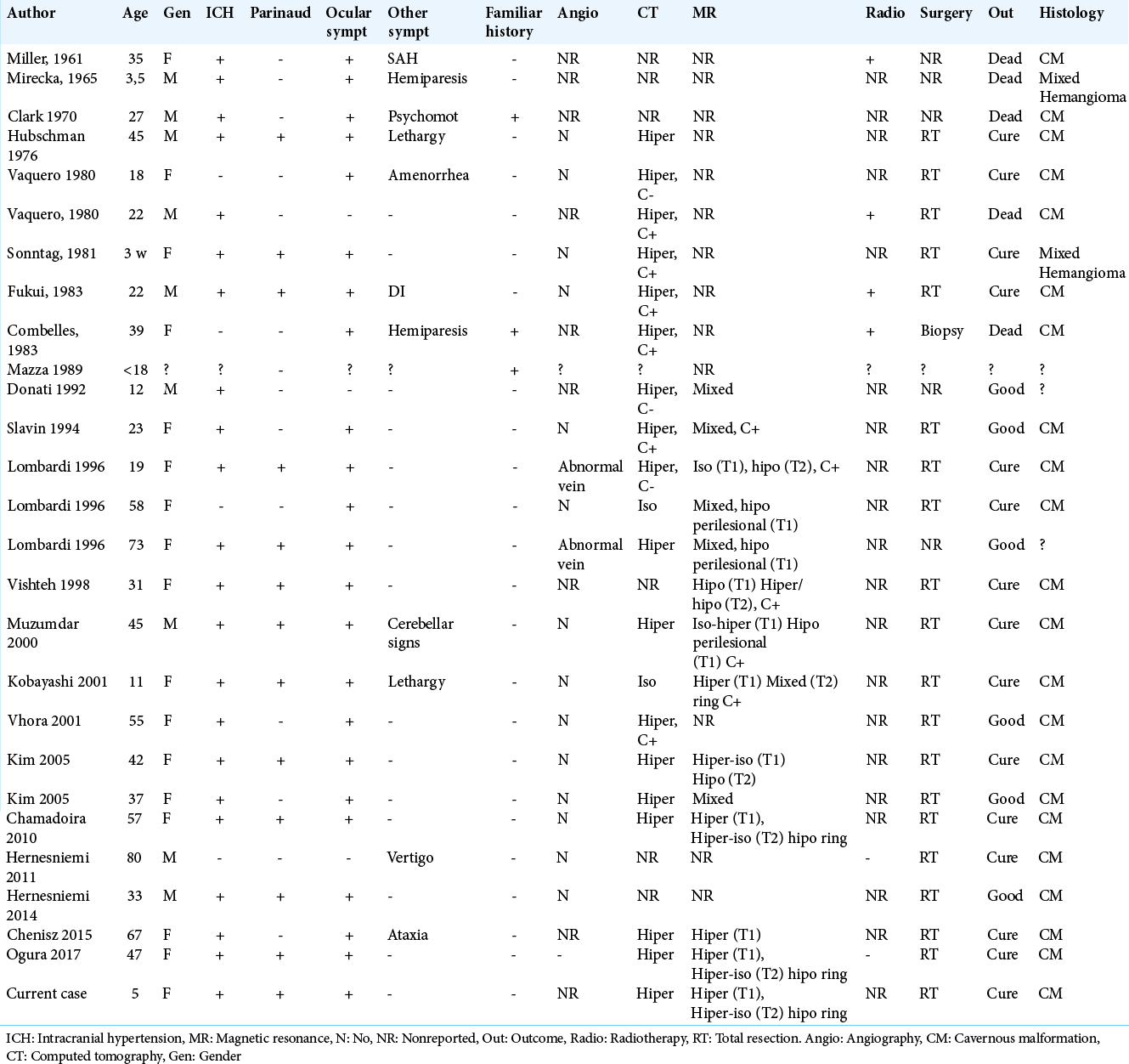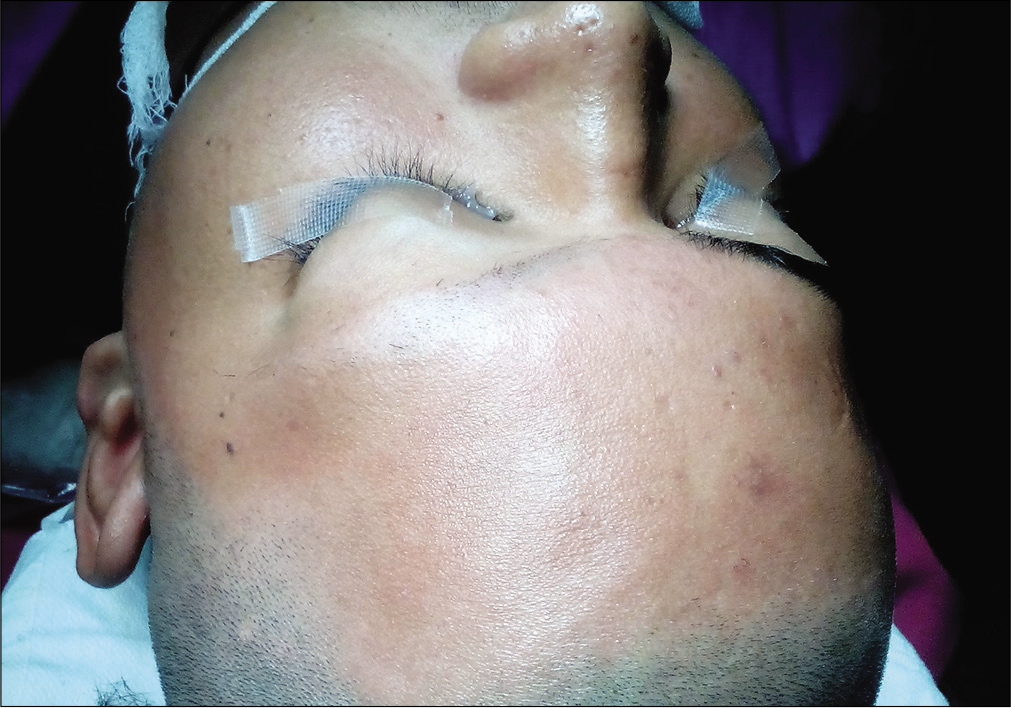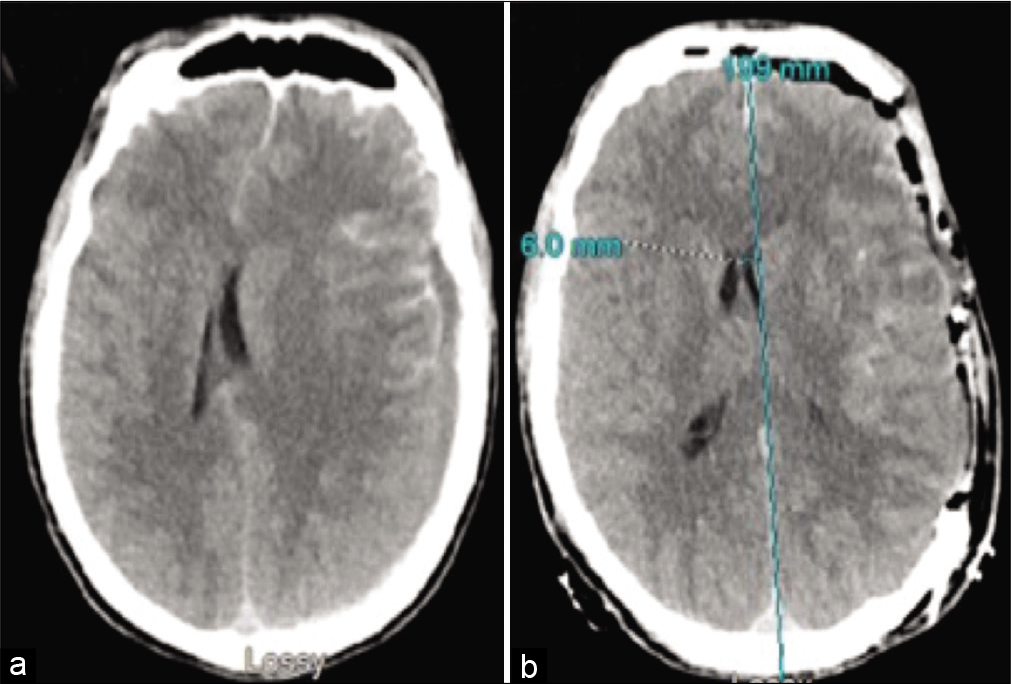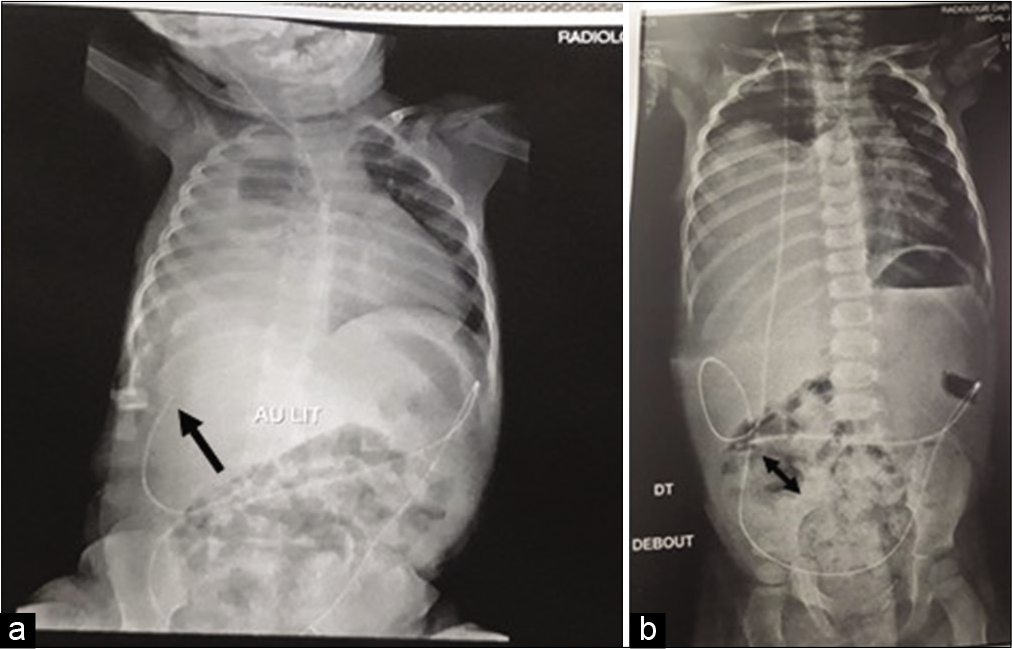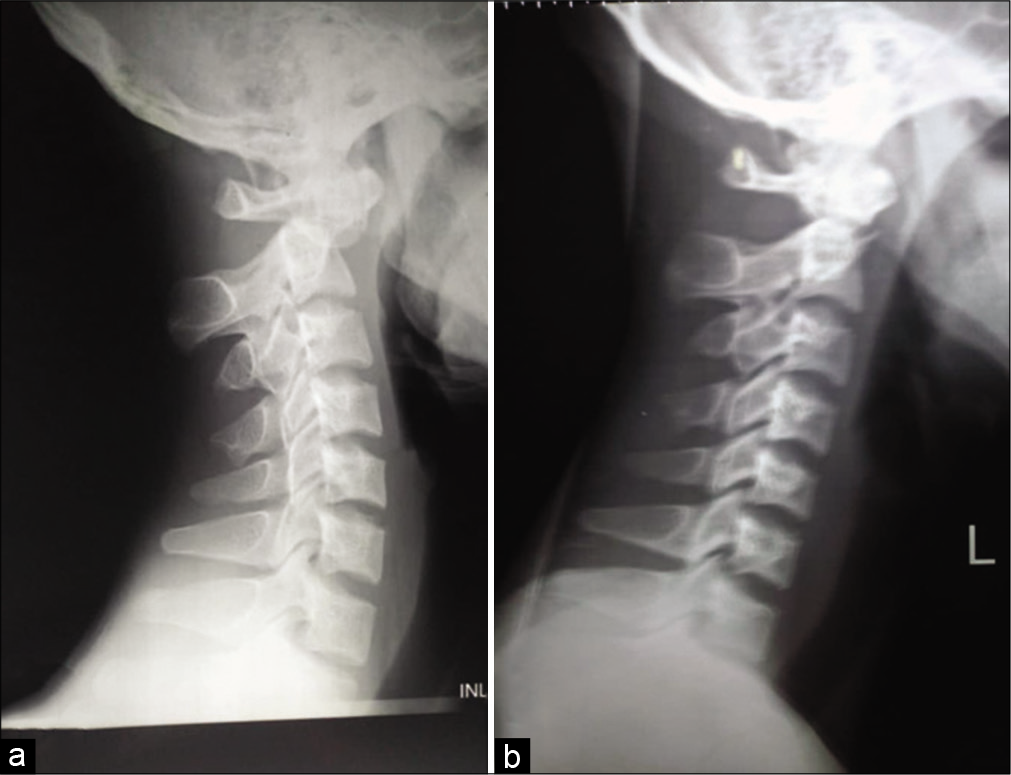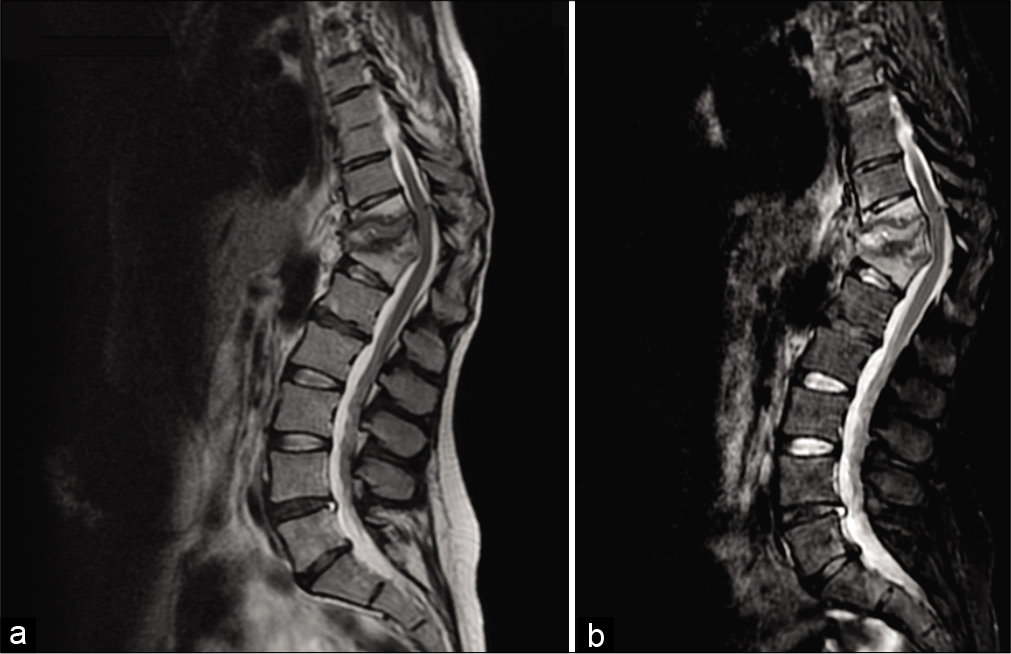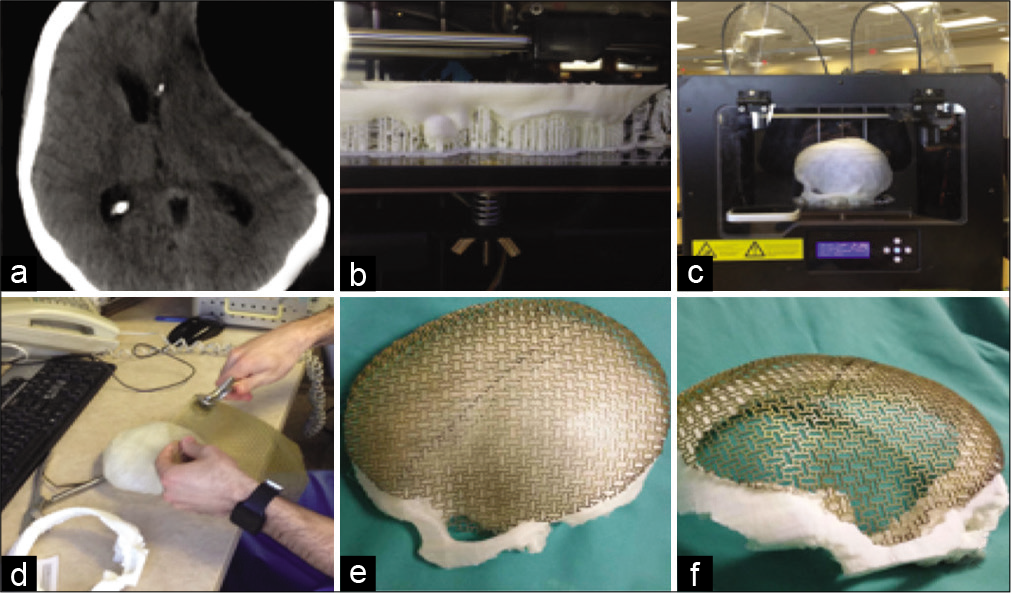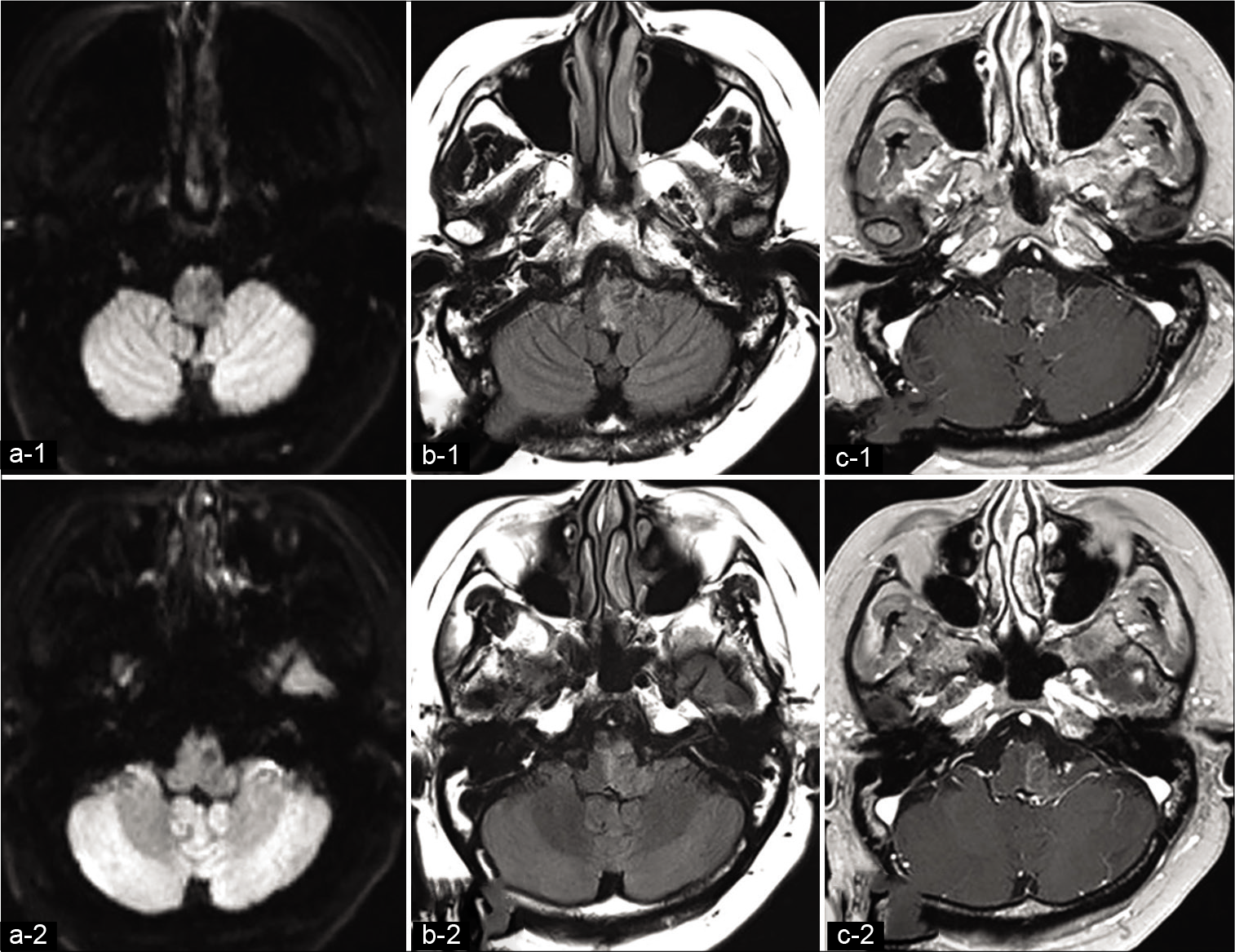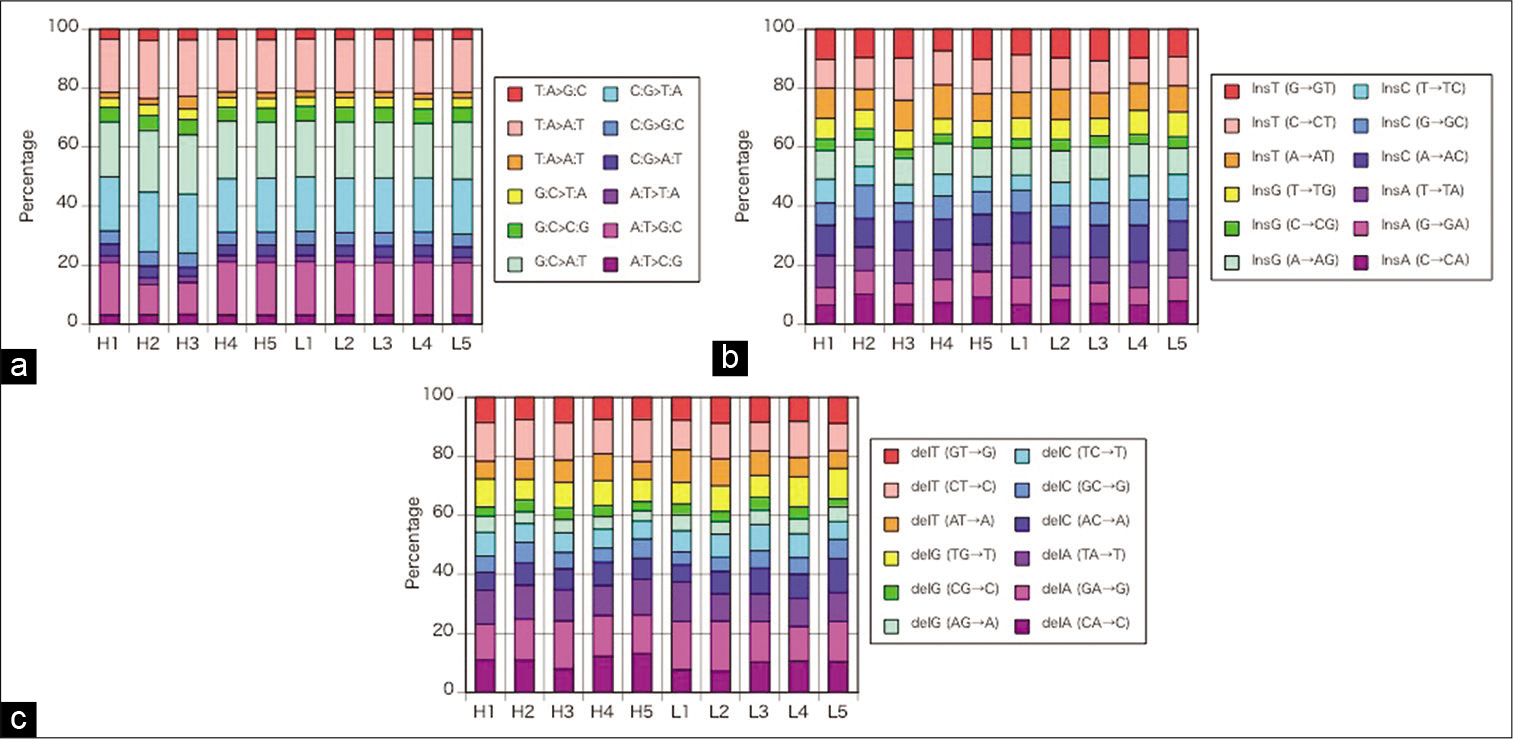Cranial angiomatoid fibrous histiocytoma: A case report and review of literature
Date of publication: 18-Sep-2020
Background: Angiomatoid fibrous histiocytoma (AFH) is a rare low-grade soft-tissue tumor that typically arises from the deep dermal and subcutaneous tissue of the extremities in children and young adults. Intracranial AFH is exceedingly rare, and only four cases of primary AFH tumors have been reported to date.
Hydrocephalus in children – A rare case of pineal cavernoma and literature review
Date of publication: 18-Sep-2020
Background: Cavernous malformations prevalence ranges from 0.4 to 0.6% and accounts for 5–15% of all central nervous system vascular malformations. Pineal cavernomas constitute <1% of all locations published in the literature, with a total of 26 cases reported, only 5 regarding the pediatric population until 2020. Overall annual hemorrhage rate is 2.4%. Symptoms are often due to hydrocephalus and intracranial hypertension.
Transcranial resection of a juvenile psammomatoid ossifying fibroma of the orbit: A case report with 2-year follow-up
Date of publication: 18-Sep-2020
Background: Juvenile psammomatoid ossifying fibromas (JPOFs) are benign, locally invasive lesion of the craniofacial skeleton that may undergo rapid growth resulting in damage to cranial and facial structures. They usually occur before the age of 15 years and should be carefully treated as their diagnosis may be confused with other lesions such as psammomatous meningioma.
Delayed recurrence of acute subdural hematoma in a patient with plasminogen activator inhibitor mutation
Date of publication: 18-Sep-2020
Background: Plasminogen activator inhibitor type I (PAI-1) is important for balancing the fibrinolytic effect of plasmin, and deficiency can result in increased risk of bleeding. We report a case of a patient with PAI-1 deficiency who presented with delayed spontaneous recurrence of an acute subdural hematoma (aSDH) after evacuation.
A rare complication of ventriculoperitoneal shunt: Pleural effusion without intrathoracic ventriculoperitoneal shunt catheter
Date of publication: 18-Sep-2020
Background: Symptomatic pleural effusion following ventriculoperitoneal shunt (VPS) insertion is very rare and poorly understood in the literature in contrary to other mechanical complications.
Determinants of discharge against medical advice from a rural neurosurgical service in a developing country: A prospective observational study
Date of publication: 12-Sep-2020
Background: In low-resource regions of the world, discharge against medical advice (DAMA) is one empiric contributory factor to poor in-hospital outcome that is not often mentioned. This study aims to investigate the determinants of DAMA from a rural neurosurgical service in a developing country.
Rare spondylodiscitis due to Mycobacterium mucogenicum
Date of publication: 12-Sep-2020
Background: Nontuberculous mycobacteria (NTM) represents an important cause of infection, particularly in immunocompromised patients. Spondylodiscitis is unusual and may be associated with underlying causes such as drug abuse. Timely diagnosis and treatment are critical, as without this, patients will demonstrate progressive neurological deterioration. Here, we present a rare case of Mycobacterium mucogenicum spondylodiscitis in a 36-year-old male, along with a focused literature review.
Rapid high-fidelity contour shaping of titanium mesh implants for cranioplasty defects using patient-specific molds created with low-cost 3D printing: A case series
Date of publication: 12-Sep-2020
Background: Cranioplasty is a neurosurgical procedure to repair skull defects. Sometimes, the patients’ bone flap cannot be used for various reasons. Alternatives include a custom polyether ether ketone (PEEK) implant or titanium mesh; both incur an additional cost. We present a technique that uses a 3D printer to create a patient- specific 3D model used to mold a titanium mesh preoperatively.
A rare case of spinal dural arteriovenous fistula mimicking malignant glioma of the medulla oblongata: Significance of cerebral angiography for accurate diagnosis of brain stem region
Date of publication: 12-Sep-2020
Background: The findings of a hyperintense sign on T2-weighted imaging (T2-WI) and gadolinium (Gd) contrast enhancement on magnetic resonance imaging (MRI) of the brain stem suggest malignant glioma. However, this pathological condition is probably uncommon, and it may be unknown that a dural arteriovenous fistula (DAVF) can imitate this radiological pattern. In addition, it is extremely rare to be caused by a spinal DAVF. Here, a rare case of spinal DAVF that mimicked malignant glioma of the medulla oblongata is presented.
Profile of genetic variations in severely calcified carotid plaques by whole-exome sequencing
Date of publication: 12-Sep-2020
Background: The precise mechanisms of carotid calcification and its clinical significance have not been established.


